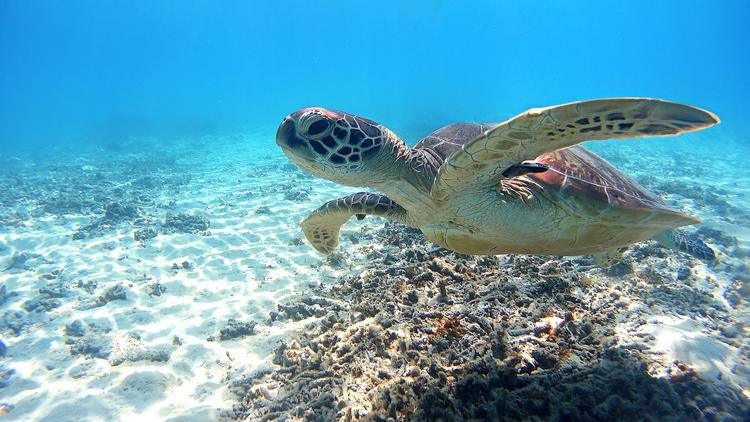
Exploring the National Parks in Okinawa in 2023: Japan’s Lush Subtropics and Beautiful Oceans With Coral Reefs
Surrounded by beautiful oceans filled with coral reefs, the southern archipelago of Okinawa is also home to Japan’s largest and most diverse subtropical evergreen forests. Encompassed by this incredible natural display, visitors can escape city life to enjoy trekking, canoeing, snorkeling, animal watching, and more! To help you plan the ultimate getaway in 2023, we’ve selected three national parks representing the pinnacle of Okinawa’s untainted beauty!
This post may contain affiliate links. If you buy through them, we may earn a commission at no additional cost to you.
Flawless, Pristine Nature! About Japan's National Parks
As Japan's foremost sightseeing spots, areas are only deemed "national parks" in Japan when they meet a rigorous set of criteria, including how naturally beautiful it is and how convenient it is to access for sightseeing purposes. While the Japanese government takes direct control in protecting and managing some areas, land can also be privately purchased, allowing people to reside within national park boundaries. This differs dramatically from countries like the U.S., where the federal government owns and maintains national parkland and the resources within.
In addition to stunning views and nature preservation, Japanese national parks also often boast hot springs, mountain trails, and loads of outdoor activities to satisfy the hearts of adventurers. Many are also dotted by historical and culturally-significant hotspots, leading to eye-opening discoveries.
In this article, we’ll introduce three must-visit national parks in Okinawa. Uncover the characteristics of each and craft your own ultimate Okinawa getaway!
Yambaru National Park: A Subtropical Forest That Is Home to the Okinawa Rail Bird!
Area: 17,331 ha (land) / Annual visitors: approx. 836,000
Yambaru National Park offers visitors the chance to enjoy a plethora of fascinating ecosystems in just one place. This includes Japan’s largest subtropical evergreen forest, along with limestone sea cliffs, karst formations, mangrove forests, and a multitude of others. In addition, the Yambaru region is the sole habitat of Japan’s only flightless bird, the Okinawa rail, which was announced as a new species in 1981.
Another iconic site is Daisekirinzan, a rocky mountain encompassed by dense tropical vegetation. According to legend, this dynamic wonder was the first creation of a local goddess, thus becoming a sacred place of prayer.
Adventurers can also partake in plenty of thrilling or relaxing activities, including canoeing through the mangrove forest, trekking across lush subtropical nature, exotic animal spotting, and more!
Our Top Tips
JR Pass for Whole Japan
Explore Japan in the most convenient and economical way with a Japan Rail Pass! It is valid for the majority of railways and local buses operated by JR.
Keramashoto National Park: Marine Sports in Pristine Oceans!
Area: 3,520 ha (land) / Annual visitors: approx. 231,000
Located roughly 40 km west of Naha, Keramashoto consists of over 30 islands and a plethora of reefs of various sizes. Keramashoto National Park accounts for approximately 3,520 hectares of land and 90,475 hectares of sea, making it far more of a marine park than a land park.
Nicknamed “Kerama Blue,” the ocean water here is incredibly transparent and is home to a tapestry of coral reefs and exotic sea life, including humpback whales and sea turtles, who breed and lay eggs in the park. Keramashoto National Park is easily accessed from Okinawa Island (Naha City, Tomari Port) via a 35-50 minute high-speed boat ride, making it a convenient choice to experience diving, snorkeling, winter whale-watching, and other staple Okinawa marine activities. While Zamami Island is packed with tourists during summer, Aka Island is comparatively quiet in July/August, allowing a summer holiday without crowds.
Additionally, the village on Geruma Island boasts elegant traditional folk homes (takaraya) built during the latter half of the 19th century that are registered as Important Cultural Properties by the Japanese government.
Our Top Tips
Japan Shinkansen, Narita Express (N'EX) & Express Train Tickets
Plan ahead by booking your shinkansen, airport train, and express train tickets online in English. Have the tickets sent to you by mail or collect them at the station once you're in Japan.
Iriomote-Ishigaki National Park: Vast Nature, Rare Animals, and Traditional Towns!
Area: 40,653 ha (land) / Annual visitors: approx. 2.4 million
Japan’s southernmost national park, the pristine Iriomote-Ishigaki National Park features a primeval subtropical broadleaf forest, Japan’s largest mangrove forest, and a plethora of other jaw-dropping natural wonders. Between Ishigaki Island and Iriomote Island lies a colony of over 360 species of coral. It is the most biodiverse place in Japan and even outdoes the Great Barrier Reef!
The expansive greenery of the Yaeyama Islands acts as a foundation for the lives of its residents, who have developed a deep respect and gratitude for the land by incorporating nature into their everyday routines. Because of this, the region brims with a deep culture of traditional folk songs and festivals that have been passed down through generations. Traditional culture is also seen in the red-bricked roofs of houses on Taketomi and nearby islands, a traditional style of architecture that thrives to this day.
While the spread of COVID-19 currently makes travel difficult, once you’re able to visit Japan again, we recommend letting your mind and body heal amongst the nourishing warmth, unique wildlife, and fascinating cultures found within Okinawa’s exhilarating national parks.
If you want to give feedback on any of our articles, you have an idea that you'd really like to see come to life, or you just have a question on Japan, hit us up on our Facebook, Twitter, or Instagram!
The information in this article is accurate at the time of publication.





